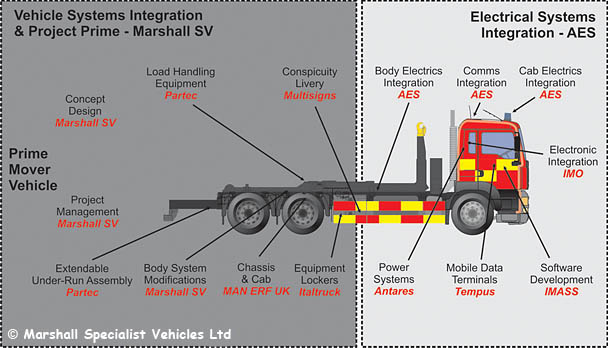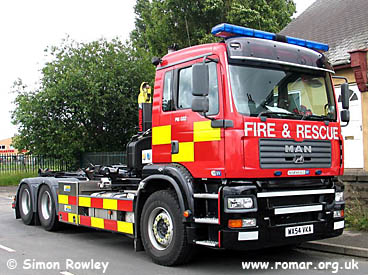

Fire service historian and author
Roger Mardon


www.romar.org.uk
© Copyright Roger Mardon
www.romar.org.uk
All rights reserved
Previous
Next
Prime movers
The prime movers are built on the 4.5m wheelbase MAN TG-
The system for loading and unloading the demountable bodies that the vehicle is designed
to carry is a Partec Multilift LHS 260.51 hook-
Integrated electrical and communications systems are the same as for the IRUs, with
on-
The prime movers carry demountable bodies comprising high volume pumping units, urban
search & rescue units, and mass decontamination disrobing & re-


Following its success with the Phase 1 contract for incident response units (IRUs), Marshall SV was awarded a variation contract in January 2004 for up to 238 prime movers. The use of prime movers with the ability to load and transport a variety of different body units, or pods, is not new in the fire service and the concept offers a versatile and economic way of providing specialist vehicles.
Unlike the IRU contract, Phase 2 of the New Dimension initiative for the development
and supply of prime movers allowed sufficient time for the production of prototype
vehicles for evaluation and test purposes. The first of five prototypes was displayed
in May 2004 and production started in August. By mid-